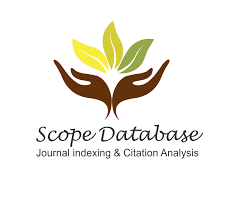Details
Data Science: A Novel Analytical Structure in Public Mental Health
Mohan Satvik Adusumalli
Disha Delphi Public School, Kota
Download PDF http://doi.org/10.37648/ijrst.v14i02.005
http://doi.org/10.37648/ijrst.v14i02.005
Abstract
Applying data science to public mental health concerns and devising remedies based on research findings can be challenging and call for sophisticated methods. In contrast to traditional data analysis initiatives. It's critical to possess an extensive project management procedure to guarantee that Project associates are capable and knowledgeable enough to Implement the data science process. As a result, this essay offers a fresh paradigm that mental health practitioners might apply to address issues people encounter when applying data science. Even so, a sizable portion of Many studies on the mental health of the public have been published, not many have talked about data science's application to public mental health. Data science has recently transformed how the healthcare business manages, analyses, and uses data. Because of the scientific methodology employed in data science initiatives, they differ from traditional data analysis. Motivating medical practitioners to use "Data Science" to mental health issues is one of the goals of launching this new framework. It's usually advantageous to have a strong data analysis framework and precise instructions for a thorough examination. Estimating the time and resources required early on in the process can also be helpful in gaining a clear understanding of the problem that needs to be solved.
References
- Dooshima, M. P. (2018). A Predictive Model for the Risk of Mental Illness in Nigeria Using Data Mining. International Journal of Immunology, 6(1), 5. doi:10.11648/j.iji.20180601.12
- Diederich, J., Al-Ajmi, A., & Yellowlees, P. (2007). Ex-ray: Data mining and mental health. Applied Soft Computing, 7(3), 923-928. doi:10.1016/j.asoc.2006.04.007
- Suicide. (n.d.). Retrieved April 21, 2019, from https://www.who.int/newsroom/fact-sheets/detail/suicide
- Menger, V., Spruit, M., Hagoort, K., & Scheepers, F. (2016). Transitioning to a Data Driven Mental Health Practice: Collaborative Expert Sessions for Knowledge and Hypothesis Finding. Computational and Mathematical Methods in Medicine, 2016, 1-11. doi:10.1155/2016/9089321
- Kopanakis, I., & Theodoulidis, B. (2003). Visual data mining modeling techniques for the visualization of mining outcomes. Journal of Visual Languages & Computing, 14(6), 543-589. doi:10.1016/j.jvlc.2003.06.002
- Public Health. (2017, August 30). Better mental health: JSNA toolkit. Retrieved April 21, 2019, from https://www.gov.uk/government/publications/better-mental-health-jsnatoolkit
- Saunders, M. N., Lewis, P., & Thornhill, A. (2019). Research methods for business students. New York: Pearson.
- Exploratory Case Study. (2010). Encyclopedia of Case Study Research. doi:10.4135/9781412957397.n139
- Bibri, S. E. (2018). The IoT for smart sustainable cities of the future: An analytical framework for sensor-based big data applications for environmental sustainability. Sustainable Cities and Society, 38, 230-253. doi:10.1016/j.scs.2017.12.034
- Pedrycz, W. (2011). Introducing WIREs Data Mining and Knowledge Discovery. Wiley Interdisciplinary Reviews: Data Mining and Knowledge Discovery, 1(1), 1-1. doi:10.1002/widm.17
- Oliveira, M. D., & Levkowitz, H. (2003). From visual data exploration to visual data mining: A survey. IEEE Transactions on Visualization and Computer Graphics, 9(3), 378-394. doi:10.1109/tvcg.2003.1207445
- Oliveira, M. D., & Levkowitz, H. (2003). From visual data exploration to visual data mining: A survey. IEEE Transactions on Visualization and Computer Graphics, 9(3), 378-394. doi:10.1109/tvcg.2003.1207445
- F. Mastrogiovanni, A. Sgorbissa and R. Zaccaria. A Distributed Architecture for Symbolic Data Fusion. In IJCAI-07, pp 2153-2158. 2007.
- Abdullah, A. S., Ramya, C., Priyadharsini, V., Reshma, C., & Selvakumar, S. (2017). A survey on evolutionary techniques for feature selection. 2017 Conference on Emerging Devices and Smart Systems (ICEDSS). doi:10.1109/icedss.2017.8073659
- I. Guyon, A. Elisseeff, An introduction to variable and feature selection, J. Mach. Learn. Res. 3 (2003) 1157–1182 . http://dl.acm.org/citation.cfm?id= 944919.944 96 8 .
- Predictive Modeling: The Only Guide You Need. (n.d.). Retrieved from https://www.microstrategy.com/us/resources/introductoryguides/predictive-modeling-the-only-guide-you-need
- Saraee, M., & Silva, C. (2018). A new data science framework for analysing and mining geospatial big data. Proceedings of the International Conference on Geoinformatics and Data Analysis - ICGDA 18. doi:10.1145/3220228.3220236
- D.A. Keim, J. Kohlhammer, G. Ellis, F. Mannsmann (Eds.), Mastering the Information Age. Solving Problems with Visual Analytics, Eurographics Association, Goslar, 2010.
- Jebbor, F., & Benhlima, L. (2014). Overview of knowledge extraction techniques in five question-answering systems. 2014 9th International Conference on Intelligent Systems: Theories and Applications (SITA-14). doi:10.1109/sita.2014.6847287











